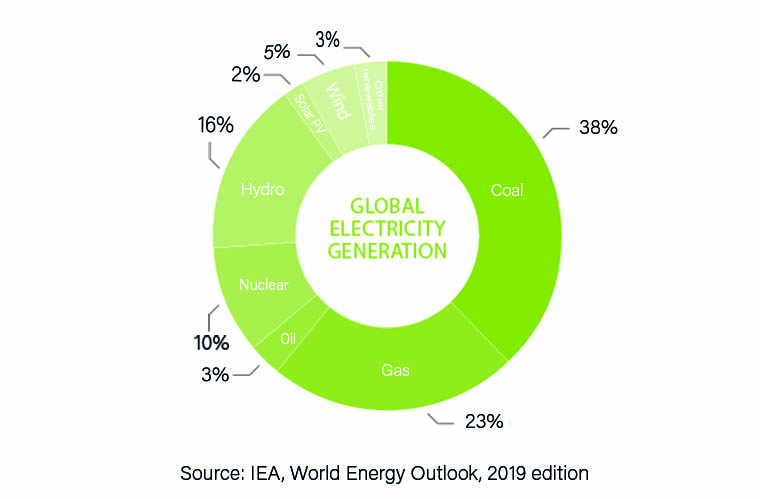Time to change
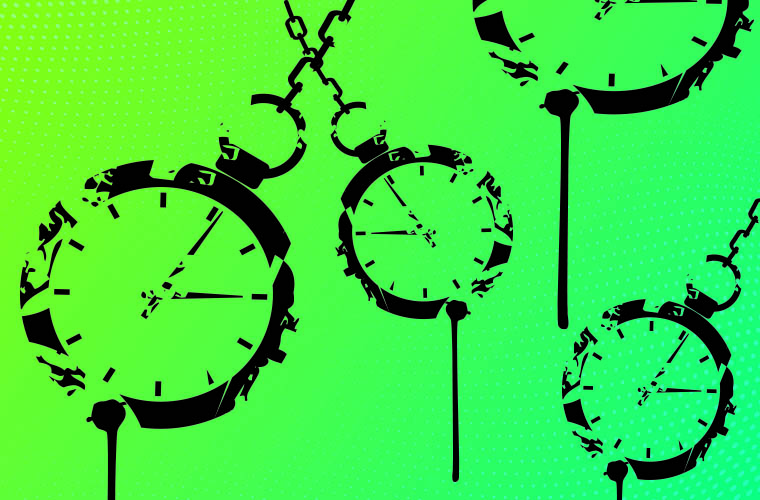
The digital world is a bigger contributor to the environmental crisis than most of us realise. Can it change itself in time?
This is not just having nice little debates and arguments and then coming away with a compromise. This is an urgent problem that has to be solved. And what is more is that we know how to do it – that’s the paradoxical thing, that we are refusing to take steps that we know have to be taken.” So declared veteran broadcaster Sir David Attenborough in an interview with the BBC last month.
Attenborough has done more than any individual in the TV industry – maybe in any industry – to communicate the value of the natural world to the general public. He’s also seen more of it, up close, than just about anyone else. He knows what he’s talking about.
We became aware that media in particular was one of the big hotspots
So how do we take the steps we know have to be taken? The broadcast industry – primarily the BBC – was the platform Attenborough used to take us on those amazing journeys. What is that industry going to do save that world it showed us?
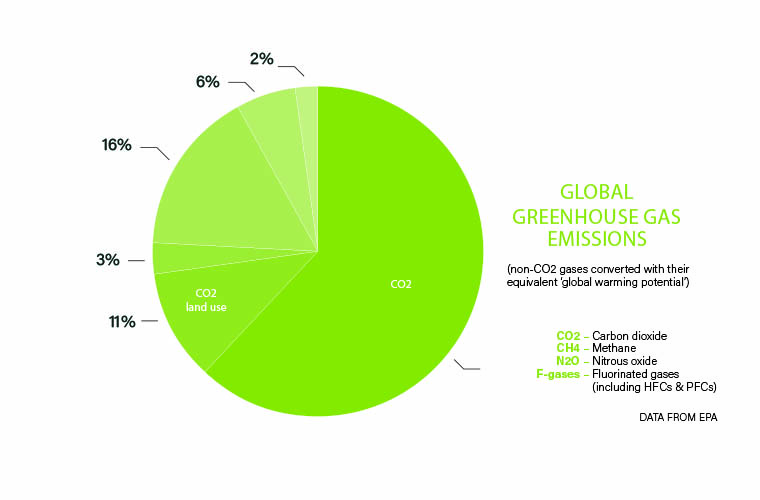
Greenhouse gas emissions are threatening all life on earth. They are generated largely by fossil fuel use, with a respectable chunk contributed by agricultural emissions, concrete production and various industrial processes. Carbon dioxide emissions are the worst offending global warmer. Once CO2 is loose, it’s hard to remove. Methane is 30 times more powerful as a greenhouse gas but gets drawn down in about 12 years. When a given amount of CO2 goes into the atmosphere, 65-80% of it will dissipate in somewhere between 20 to 200 years and portion of it will stay in the atmosphere for thousands of years.
‘World War II-style mobilisation’ is a phrase thrown around a lot to describe the effort necessary to get to zero carbon emissions, and that’s not an exaggeration. Every part of the economy will need to rethink how it does business. As Aaron Matthews, head of Bafta’s Albert sustainability programme, told FEED in a Genius Interview last year: “Sustainable living is about fashion, it’s about diet, it’s about travel, it’s about communities, it’s about every aspect of our lives.”
Matthews noted the denial that still exists in some quarters around the necessary transition: “When I tell people, ‘Your carbon footprint is around 12 tons of CO2 a year’, they ask me, ‘Well, what should it be?’ And they are kind of astonished when the only answer is ‘zero’! Because that’s the goal. We have to get to a zero carbon footprint. That’s hard for industry organisations and people to wrap their heads around, but of course it’s what’s required – and also what is possible.”
There’s no denying that a lot of apple carts are going to be upset by the transition. The silver lining is that it’s a tremendous opportunity to redesign aspects of industry – and society – that aren’t working that well anyway.

Chris Priest: Professor of sustainability & computer systems at the University of Bristol, who previously worked at HP Research Labs
Untangling the networks
Chris Preist is a computer scientist at the UK’s University of Bristol. He has been working on how digital businesses can address the problems of climate change, since his time with Hewlett-Packard Research Labs.
“Research is often thinking about disruptions,” says Preist. “Sometimes they’re technological disruptions. Back at HP, I talked with the head of our lab about climate change and how it was likely to be a societal disruption and that we needed to think about how to engage the company with that both from a risk and a responsibility – and possibly opportunity – perspective. As a result, I was given a brief at HP to look into that and spent two years focused on it.”
Preist finally left HP to work in academia, continuing to focus on the sustainability impact of digital technology. “We tried to understand where the hotspots were. And we became aware that media in particular was one of the big hotspots.”

One of the media industry’s biggest environmental impacts, says Preist, is that it is the number-one driver of network expansion. “The reason why we have fat pipes into our houses is not because of email, but because we want to stream high-quality media. And also the reason we have extensive high-power mobile networks is, again, not because of email, but because we want to stream media when we’re in the tube or on the bus or waiting for a meeting.”
All these servers distributing content require a tremendous amount of power. Several of the media giants, like Facebook and Google, have been working consistently over the past few years to power their server farms from low- or zero-carbon energy sources. But Preist points out that the big picture is more complicated. “Most of the emissions associated with, say, YouTube are actually in the network, not in the origin server, particularly the mobile network. Organisations like Google can sort out their servers by using renewable energy, but the big impacts are elsewhere in the system. So they need to think about working with other partners to reduce the impacts system-wide.”
Organisations like Google can sort out their servers with renewable energy, but the big impacts are elsewhere in the system
These greater impacts are in places like core mobile networks, edge networks and home-network and end-user equipment just sitting in our houses. Preist notes the core network tends to be the most efficient part of the chain, with efficiency dropping as you get closer to the user device.
Preist admits that tremendous strides are being made in network and device efficiency, but it is quickly gobbled up by more and more customers streaming higher-quality media. It also enables new technologies, like HDR TVs, which consume substantially more power.
As far as the carbon emissions within the industry, production itself – like the travelling circus it often is – can have one of the biggest negative impacts.
“If you’re looking at an organisation like the BBC or Netflix, content creation is a large part of it. Some of the high-end productions use a lot of energy in their creation. In that case, it’s not going to be about the digital technology. It’s far more about your set, your travel, your heating. And part of it is just running the offices too. The digital portion will be relatively small.”
Preist emphasises that success is going to depend on group action, not individuals working separately. “It’s not about individuals feeling guilty. Each of our individual footprints is very small. It’s the job of companies to think about the whole system and to reduce energy use across the system,” he explains.
“It depends on how collectively seriously we take the climate emergency, and the impact that has on energy prices. At the moment, what will act as a driver is mainly legislation. But the European Union energy legislation – like the Energy Star certification – drives energy efficiency at a component level. We need to think about how to drive efficiency at a system level. It requires a certain amount of R&D by progressive companies to think about this. Organisations like Google do genuinely care about the climate emergency. They don’t have their head in the sand. Tech companies in general do care about these things. So we need to invest in research about how to do this, and also work with governments to do it efficiently on a national and international scale.”
Broadcast wakes up
In an instance of the group action recommended by Preist, the DPP (Digital Production Partnership), an industry coalition of broadcasters and media tech companies, launched a sustainability initiative in November to help the media industry reduce its carbon emissions.
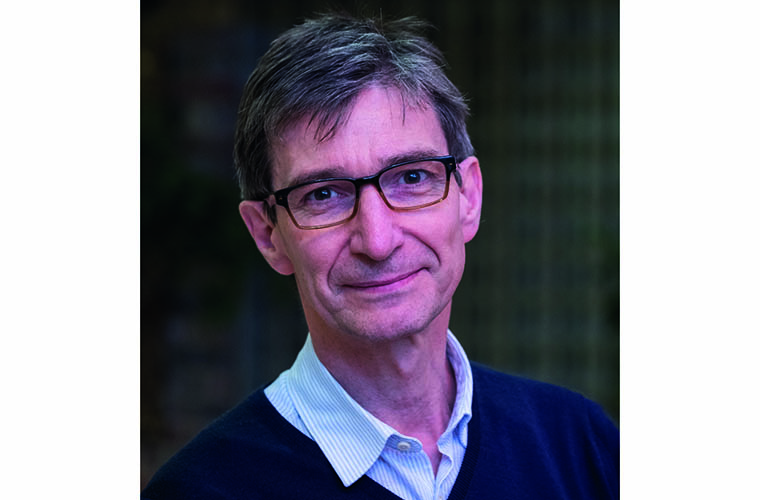
Mark Harrison: The managing director of DPP, which recently launched the Committed to Sustainability Programme
The DPP’s new Committed to Sustainability Programme provides participating companies with a self-assessment checklist that enables them to record their progress in implementing sustainability policies, then awards them a score out of five. Completion of the assessment entitles a company to display a Committed to Sustainability mark, and to publicise engagement with the programme.
Environmental impacts had already been in conversation at DPP events for some time, says DPP managing director Mark Harrison. “Sustainability was initially raised at the DPP Tech Leaders’ Briefing in 2018. It was interesting that, while only three speakers referenced it directly that year, it created a buzz around the whole event.”
He continues: “There was an explicit call for the DPP to use its ability to bring together all parts of the media supply chain, to formulate an industry-wide scheme. We could see that, while the need for action had become urgent, most companies needed help to work out how to measure their impact and improve their sustainability performance.”
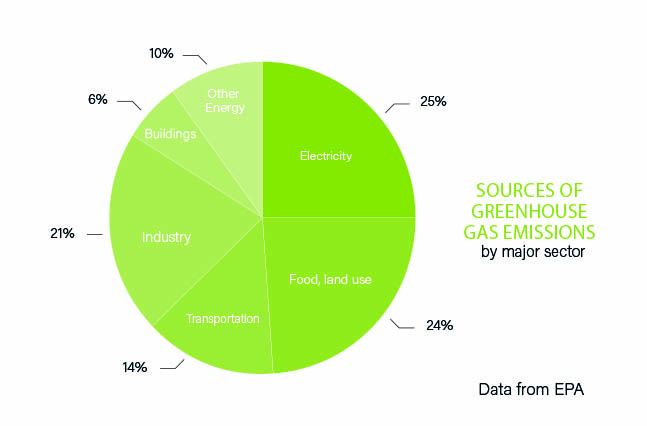
The Committed to Sustainability Programme looks at a company’s management, energy, emissions and waste, particularly as they impact carbon emissions, and is designed to be simple and easy for companies to implement. The assessment asks a series of questions about how an organisation manages sustainability, the policies it implements and responsibilities it assigns to individuals to manage the process. It then covers how an organisation measures, reports and reduces its energy, waste and emissions.
Positive behaviours such as transparency and measures taken to reduce any one of the metrics score more highly. A company with a high score (4 to 5) will be one that is able to measure its energy use and is publicly reporting its performance. It will also have set targets to reduce its environmental impact.
While there’s nothing preventing participants from publishing scores voluntarily, DPP keeps them confidential. “The idea behind the programme is to encourage positive behaviour and to support the industry and companies taking part,” says Harrison. “We understand that, for a lot of suppliers, sustainability is new, and they are likely to achieve a low score. Publishing a low score may discourage them from improving and, worse still, discourage others from taking part.”
Tech companies take a stand
“Tech companies – and most media companies are also tech companies – have a huge role to play in arresting climate change, and this self-awareness is starting to drive change. The World Economic Forum estimates that the digital sector can halve CO2 emissions by 2030 through a mix of direct and indirect actions – including the influence media has on people’s lives,” explains Harrison.
A number of DPP member companies have also already completed the assessment, including Atos, Film Locker, InSync Technology, Piksel, Qvest Media, Red Bee and Sundog Media Toolkit. Sports broadcast think tank the Sports Video Group (SVG) is also a supporter and will encourage its members to take part.
Tech companies – and most media companies are also tech companies – have a huge role to play in arresting climate change
Though the DPP doesn’t seem to have defined a specific zero emissions target date, Harrison points to the UNDP and the report from Climate Action Summit 2019, which puts forward the need to reduce global carbon emissions by 45% by 2030 and achieve net-zero emissions by 2050.
“Any targets that organisations or the industry in general set need to be far more aggressive than those already proposed by the Climate Action Summit,” Harrison warns. “For example, the BBC’s Greener Broadcasting strategy aims to have a positive environmental impact by 2028 – meaning it aims to give back more than it takes out by 2028. If we take that as a benchmark, then it’s not a huge amount of time to get to a position where the industry at the very least has reduced its emissions by 45%.”
Of course, any target short of zero emissions by noon tomorrow is problematic. Every day that goes by is a day that locks in more heating. At some point, businesses must make quantum – likely uncomfortable – leaps if we stand a chance of getting things under control.
At the end of last year, Inger Andersen, executive director of the UN Environment Programme, said: “Our collective failure to act early and hard on climate change means we now must deliver deep cuts to emissions – over 7% each year, if we break it down evenly over the next decade. This shows that countries simply cannot wait until the end of 2020, when new climate commitments are due, to step up action. They – and every city, region, business and individual – need to act now.”
FitBit for the planet
If, as Sir David Attenborough said, we know all we need to for dealing with the climate crisis, then why don’t we do it? One problem is that people resist change. A lot of us would literally rather change the entire Earth than change our behaviour.

Katie Patrick: An environmental engineer who wants to gamify our behaviour to combat the climate crisis
In an interview with FEED last year, this effect was described by John Lawson, executive director of the AWARN Alliance, an organisation working on improved digital media solutions for updating people in major emergencies.
“What typically happens is that people delay,” said Lawson. “They call it ‘milling’. They get the alert from some source, and then they freeze – one, in order to get confirmation of some kind, and two, to gather more information before they act.”
How do you turn a defensive, fear-based approach into one that incorporates creative problem solving?
Katie Patrick is an environmental engineer living in San Francisco. She believes that, in a world where every aspect of our lives is digitised, gamifying the environmental crisis might be the way forward. Patrick calls her model the ‘Fitbit for the planet’ and it’s an apt analogy. Making action measurable and providing immediate feedback is a well-understood path to behavioural change. When a Fitbit user counts their steps throughout the day, they’re much more likely to engage with exercise over the long term, to do more and want to improve. We also see this feedback technique at work when digital public displays at the roadside show the speed of oncoming vehicles – a technique well understood to bring drivers back in line with the posted speed limit.
Patrick grew up in Australia, surrounded by nature and a love of crafts and practical creativity. From early on, she was moved by and became actively involved in the environmental movement. She went on to get a degree in environmental engineering, which brought together disparate disciplines from water engineering to reducing industrial pollution. She soon found herself searching for a way to make environmentalism a mainstream concern.
“I really let go of the whole grungy environmental activist thing,” she recalls. “I completely lost interest in anything that was fringe culture and I got really attracted to this sort of shiny corporate sustainability that was happening in the early 2000s. That was like a whole new world to me. It really was an exciting time because, for the first time ever, corporations were saying ‘Let’s do something for the planet’.”
After moving to the Bay Area and engaging with Silicon Valley, she began to see the potential of using new digital tools to tackle environmental issues.
“I just kept on doing whatever I thought was creatively interesting and got to thinking about game design and became interested in environmental data and behavioural psychology. I think there is this big missing piece – getting real data and showing it to people in this ‘Fitbit for the planet’ kind of model,” says Patrick.
“Water, electricity, carbon intensity, forest cover – there are so many different datas that you can get and none of them are being collected with any good granularity.”
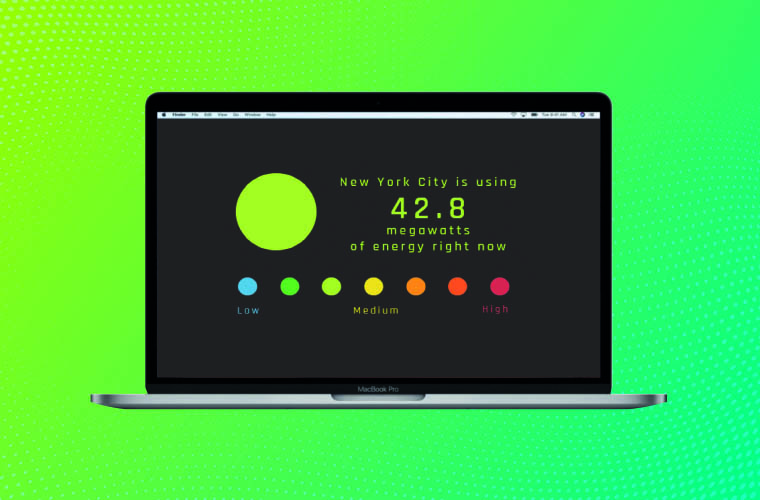
Sustainability people desperately need help with the actual strategies that are going to work, because a lot of them
Game on
Patrick has mocked-up for one project, which uses satellite imagery to measure and score green cover in different cities around the world.
“You would only need to update it once a year, because trees don’t grow that fast. You work out a percentage of green cover for each city and then rank the cities and track their progress over time. People have done bits and pieces – the satellites are there and people have done one-off projects and maybe put the results into a scientific paper behind a paywall – but in terms of making something that anyone can view in a web browser with good user design, that has hardly started.”
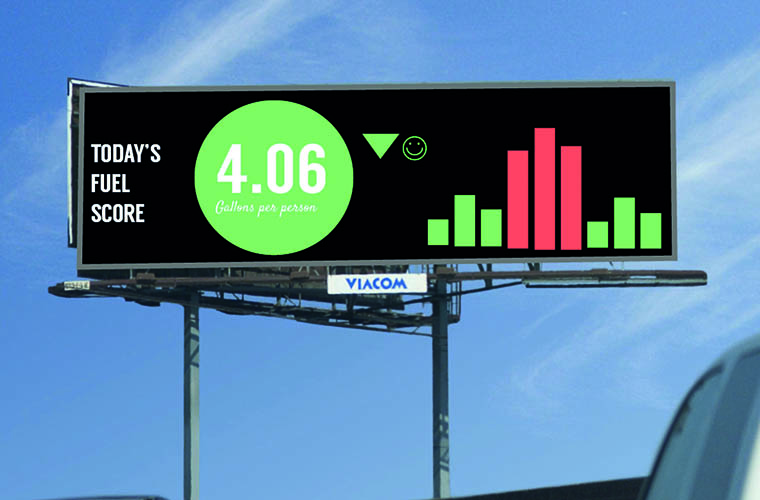
Game over: Katie Patrick wants to gamify the climate crisis by comparing data to encourage positive action
Patrick has sketched out other potential interventions like using Magic Leap AR to see in real time the live thermal images of city buildings or public displays that show how much energy a city or neighbourhood is using. There’s no reason that individual buildings or public spaces couldn’t display real-time updates of energy use and local air quality. And in the big picture, regularly updated data streams – like stock market numbers – of global greenhouse gas levels could be both a unifying and motivating force internationally.
But just giving people the right data isn’t enough to create change. As with any good design, clear, simple calls to action are essential for getting people to actually change behaviour when they are presented with this data. Enabling people to compare their performance with others is one excellent driver of change.
“Showing people the data helps, but when you compare one person against another person, or one building against another building, or one company against another, you start to see a big result. Using the ‘social norms’ is when you say: ‘92% of people in your community have committed to doing this particular water-saving behaviour’ and that gets people to act. They’re really simple concepts, but they’re the main drivers of human behaviour,” she explains.
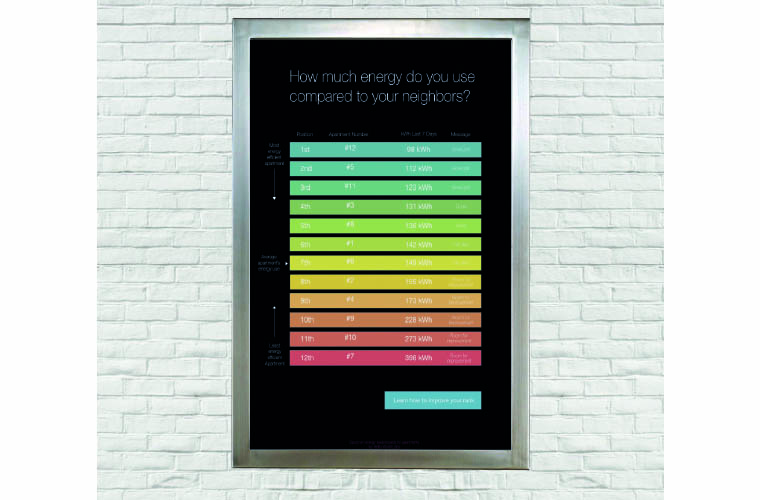
Patrick’s writing, teaching and podcasting around using design and data to transform the planet has been condensed into a book called, How to Save the World: How to Making Changing the World the Greatest Game on Earth.
The book has attracted the greatest interest, not in the environmental movement, but in the game design community.
“The people who seem to be the most effusive and complimentary about my work seem to be game designers. I would have thought it would be sustainability people, but it’s game designers and Silicon Valley people who are looking for more meaning and more impact.
She concludes: “Sustainability people desperately need help with the actual strategies that are going to work, because a lot of them are just struggling to get traction. They may know about the science of sustainability, but may not know how to create the movement.”
This article first appeared in the February 2020 issue of FEED magazine.



